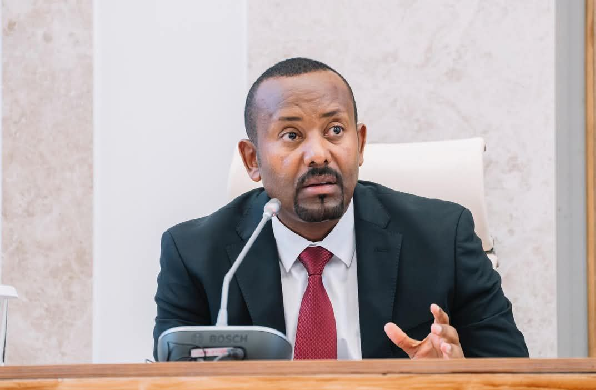
Corridor development projects in Ethiopia have become a major component of the country’s economic growth and urbanization strategy. The project has the potential to have a significant positive impact on urbanization and city cleanliness. It can increase transportation efficiency throughout the city by minimizing congestion.
Well-planned corridors can improve traffic flow, lowering congestion and travel time. It also contributes significantly to the integration of public transportation. Corridors frequently prioritize public transportation, boosting its use while decreasing reliance on private vehicles.
Another advantage of corridor development is that it promotes sustainable urban growth. It encourages mixed-use developments with higher densities, which can help to decrease urban sprawl while also preserving green space. Concentrating amenities and services along corridors promotes walkability. Because communities can become more walkable, residents are encouraged to walk or bike instead of driving.
In addition to promoting green infrastructure, the corridor development project can incorporate green spaces, parks, and vegetation, which can enhance urban biodiversity and provide natural cooling. Dedication and deduction to carry out the project have environmental benefits and a reduction in emissions. Better public transportation and less reliance on cars can result in lower greenhouse gas emissions and improved air quality.
Moreover, it promotes economic growth in urban areas by improving access to jobs, education, and services, which in turn produces job prospects. Well-designed corridors have the power to draw in companies and capital, which can boost employment and revitalize local communities.
Corridor development projects improve quality of life and community connectivity by creating dynamic public areas that promote social interactions and community engagement. Additionally, it fosters safety improvements. Better-designed corridors can increase pedestrian and bike safety by incorporating dedicated lanes and improved crossings.
Creating awareness and enhancing cleanliness are the most critical parts of corridor development. As a result, the corridor development project is critical to ensuring urban cleanliness, hygiene, and overall quality of life. These projects can take many forms, such as community clean-up drives, trash management programs, and public awareness campaigns.
It also encourages urban cleanup projects. One form of corridor development is frequent maintenance. Cities might set regular cleaning and maintenance schedules for individual corridors to keep them nice. It also provides long-term trash management solutions. Improved garbage disposal facilities along corridors can encourage proper waste disposal while reducing litter.
Given these realities, Addis Ababa has started conducting the Corridor development project. The project is essential in bringing many outcomes to the city. It provides green spaces, parking areas, and so on.
According to Ethiopian Prime Minister Dr. Abiy Ahmed, the corridor development project is aimed at the next generation beyond today. Corridor growth has resulted in the construction of about 200 kilometers of roadways in Addis Ababa alone. Large pedestrian walkways have also been constructed.”
He added “Adequate compensation has been paid to citizens affected by the corridor development. More than 17 billion birr in compensation has been spent so far. Creating an environment where children can play football and making the environment comfortable for living is a fascinating matter. Besides, the Addis Ababa corridor development project has created job opportunities; and improved traffic flow.”
Furthermore, “exciting work is also being done in all regional cities; for example, the work done in Harar city with citizen participation is an example for all cities. Hence, the project in the Harar city is bearing fruit, leaving a beautiful place for our children to pass through.”
It is true that corridor development, part of the nation’s initiative to transform urban infrastructures in Ethiopia, is currently expanding across several cities in the country. For instance, seven cities have been implementing the project in the Amhara region. This project is being implemented using the cities’ own resources, public participation, federal support, and various grants.
Accordingly, the project, which began in Bahir Dar, Gondar, Dessie, Kombolcha, Debre Berhan, Debre Markos, and Woldia, includes the construction of 32.23 km of roads, 27.04 hectares of green spaces and parks, 3.7 hectares of public squares, 25 km of roadside lighting, and building facade works.
The corridor development is being carried out in different phases within a short timeframe while maintaining quality standards. Gondar, Kombolcha, and Bahir Dar have completed the first phase and are now moving into the second phase.
Corridor development in the South Ethiopia Regional State has begun in seven urban administrative cities, with a particular focus on regional centers and zonal capitals. The project is being implemented in eight cities through a collaborative effort involving the federal government, zonal and city administrations, and public participation, according to the Office of the Prime Minister (PMO).
The towns of Wolayta Sodo, Arba Minch, Dilla, Sawla, Jinka, Karat, and Yirga Chefe have undergone significant changes, including the construction of 41 km of corridors, 26 hectares of green spaces and parks, 9 children’s playgrounds, 11 km of roadside lighting and building enhancements, 0.18 hectares of public spaces, and 3 fountains. In Arba Minch, development work has included a 6-meter-wide footpath on one side, a 3.2-meter bicycle lane, a 4-meter green area, and street lighting installation.
Indeed, corridor development is both urgent and necessary at this moment. According to data from the World Bank and other sources, cities are home to 57 percent of the global population. Thus, the corridor development initiative is intended to accommodate urban growth. The global projection for urban population growth over the next 30 years is 70 percent, and “this prediction has shaped the goal of establishing a modern urban system.”
As a result, the corridor development program, which began in Ethiopia’s capital city, has spread to include regional cities, reflecting the project’s long-term objective. The project comprises the construction of critical infrastructure such as electricity networks, bridges, asphalt roads, and other amenities, emphasizing its strategic importance.
Therefore, every citizen and relevant local and international entities should support the government to continue investing in infrastructure projects that support these corridors. As the projects advance, they are projected to have a substantial impact on the country’s not only political and socioeconomic development but also environment protection works, among other things.
BY EPHREM ANDARGCHEW
THE ETHIOPIAN HERALD SUNDAY EDITION 23 MARCH 2025




